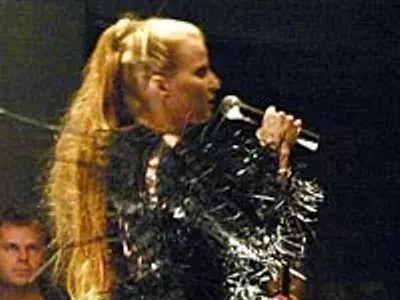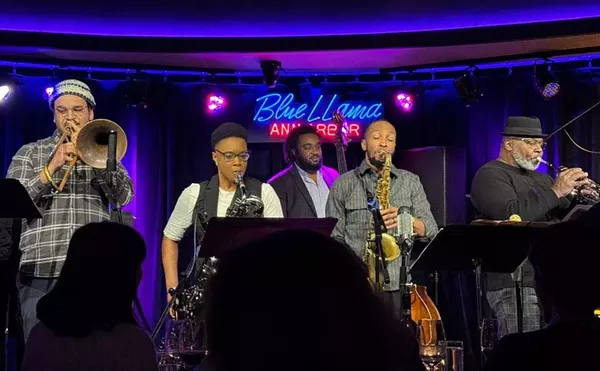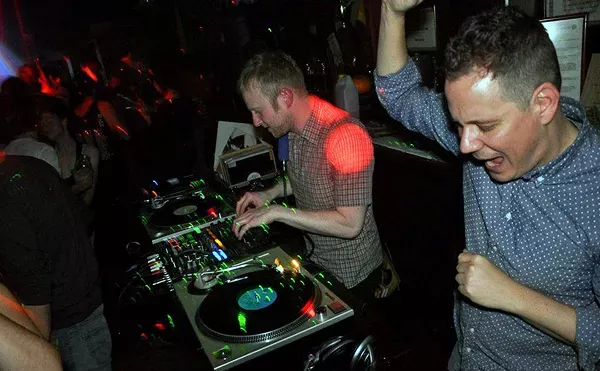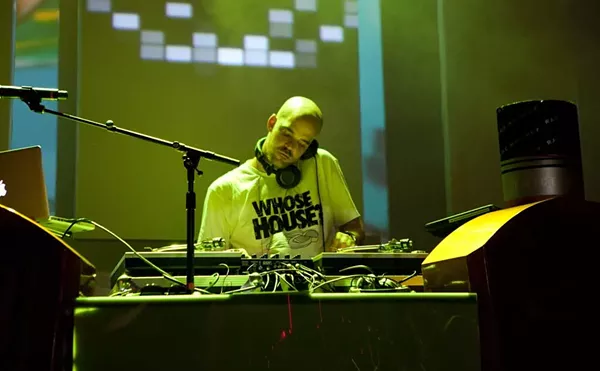It is, oddly enough, one of the most wasteful elements of the modern age, this unfortunate tendency to preserve every blip, fart, wonky note, missed cue, demo version and deleted scene produced in our nation’s film and music studios.
How many have you seen?: DVDs featuring the screen tests of (nice enough but) thoroughly unremarkable actors; half an hour of deleted scenes which add nothing to our appreciation of the film in its theatrical form; self-important interviews with (and vacuous audio commentary by) second-and third-tier directors; “making of” documentaries on movies so formulaic, who gives a goddamn how it got made?
I submit for your consideration the two-disc “collector’s edition” of Daredevil, and inquire whether all this junk-drawer foolishness hasn’t reached critical mass.
Thus it brings us special pleasure to recommend two recent DVD releases of exceedingly worthwhile music documentaries too long out of print: Robert Mugge’s Deep Blues (Sony), originally released in 1991, and James Szalapski’s 1976 film on the then-emergent “new country” scene, Heartworn Highways (Navarre).
Narrated by musician and writer Robert Palmer, Deep Blues consists of a loose ramble through the Mississippi/ Arkansas/Tennessee blues landscape. Blues, but deep blues: The film’s territory isn’t the tourist-friendly Beale Street scene, home to upscale restaurants and overpriced souvenir outlets. Palmer and Mugge’s purpose, stated forthrightly at the outset of the film, is to document the less well-known musicians working in juke joints and side rooms around the South’s fabled hill country.
Music director Palmer largely eschews urban locations in favor of rustic ones, in order to capture unprocessed music performed at fish fries and impromptu parties. As it unravels before us, Deep Blues becomes both history lesson and historical rescue. Booker T. Laury rips into “Memphis Blues” on his living room piano, North Mississippi bluesman R.L. Burnside sits on his own front porch to deliver a rugged solo electric performance of “Jumper on the Line,” and an unnamed field serves as the setting for Jessie Mae’s Fife and Drum Band’s “Bouncing Ball.” Junior Kimbrough runs down a hypnotic eight-minute version of “Junior I Love You” at his Holly Springs juke joint while Roosevelt “Booba” Barnes burns through “Heartbroken Man” at his Playboy’s Club in Greenville, Miss.
Though some have since become better-known, the performers captured in Deep Blues were, at the time, relatively unheard-of outside of their own locales. (Kimbrough had yet to release an album of his own when the film was first released and Burnside, lately courted by such indie darlings as the Jon Spencer Blues Explosion, here performs for a loose assembly of friends, family and a couple of yard chickens.) The real treasure of the film is its record of rugged, unmediated performances by artists most listeners will be unfamiliar with — artists who, in many cases, provide jaw-dropping interpretations of blues numbers both canonical and obscure. Jack Owens and Bud Spires’ renditions of “The Devil” and “Hard Time Killin’ Floor Blues” are among the most haunting versions of those songs ever recorded. (Owens himself looks ancient and seasoned, as if he were hewn from a single piece of teak or mahogany — but watch his fingers skitter, spider-like, across the fret board, and be amazed.)
Mugge largely has only to set up his camera and record the wonder, and he and Palmer wisely defer to the musicians here; most of the film is given over to live performance, with the briefest amount of interviewing providing an occasional preface. The result is an eminently satisfying piece of cinema verité, a film that, in the best possible sense, gets out of the way of its subject. Though not as scholarly as PBS’ recent series on blues history (which, like the reissue of Mugge’s film, is occasioned by the declaration of 2003 as “the year of the blues”), Deep Blues ends up being one hell of a lot more fun — though not, thank Jesus, the good, clean kind.
Dirty fun also abounds in Heartworn Highways, shot in 1975 around Austin and Nashville during the “new country” singer-songwriter boom. Beginning with a whisper-quiet credits sequence, under which Guy Clark performs a wrenching solo acoustic version of “L.A. Freeway,” James Szalapski’s film presents a combination of tour footage, studio performance, and kitchen-table jam sessions, all without extraneous commentary.
Stylistically, Heartworn Highways’ lack of voiceover makes a great deal of sense; where Robert Palmer provides historical information or biographical introductions to performers, Heartworn Highways’ focus is the up-and-coming breed of country songwriters, circa the mid-1970s, and most of the faces here were just coming to prominence at the time of the film’s release. But what a roster: Townes Van Zandt and Guy Clark are the film’s primary figures, but Charlie Daniels, David Allan Coe, Steve Young, Rodney Crowell and Larry Jon Wilson all receive a healthy amount of screen time. Not to mention two performances which are downright eerie in their prescience: John Hiatt playing “One for the One for Me” directly into the camera, and a then-unsigned Steve Earle, looking about thirteen years old (if a hard thirteen), working an early version of “Mercenary Song” as if his life depended on it.
Which it may have — at least to Earle and his fellow musicians, at least at the time. What strikes the present-day viewer about Heartworn Highways, apart from how young, how impossibly young these performers appear, is how passionate they are about music. Not simply their own music, but the transfigurative power of all music. To watch Townes Van Zandt, one of the most powerful songwriters of his day, rolling through “Pancho and Lefty” for an audience of two, to see Guy Clark perform “Desperadoes Waiting for a Train” for a bar filled with maybe 35 people, is to watch a thing of beauty unfold before you.
Szalapski clearly means to link Van Zandt, Clark, Coe and the rest with the ’40s-Grand-Ole-Opry era of country music — a testimonial from proprietor Big Mack McGowan of Nashville’s venerable Wigwam Tavern, set to Guy Clark’s “Old Time Feeling,” accomplishes as much — and it could be argued that one element these youngsters had in common with their forebears was a viciously self-destructive streak, a deep commitment to excess utterly foreign to the cleaned-up Nashville sound that dominated the airwaves during that period.
One scene from the film sums up that connection in an especially powerful way. Van Zandt sits with his next-door neighbor, a 79-year-old African-American blacksmith named Uncle Seymour Washington, in Washington’s kitchen. During a long conversation about the relative merits of whiskey, Washington volunteers, “People condemn whiskey, but they have no right to. ’Cause when God created the heaven and earth, he also created barley, and rye, and if he didn’t think those things were good for man, he wouldn’t’ve let those things grow. Just like he created food for us to subsist on, but he didn’t mean for us to eat so much of it until it was detrimental to us. You don’t have to drink a barrel of whiskey just because it’s sittin’ in front of you …” And he trails off.
Cut to Van Zandt performing his searing song about loneliness and excess, “Waitin’ Around to Die.” During the whole of the performance, one watches Washington become more and more visibly upset, until he’s crying openly. The message, unspoken, is nonetheless clear: Some things — the damage we do, our weary hearts, the power of music — transcend generations.
This is, ultimately, the argument of both Deep Blues and Heartworn Highways — both of which are packed with such powerful performances cut from their original versions that the inarticulate speech at the heart of musical expression needs no accoutrements, no flashy production, no gilded lilies in order to move, to shake, to please us.
Eric Waggoner is a freelancer writer. E-mail [email protected].





